All about the types and varieties of viburnum
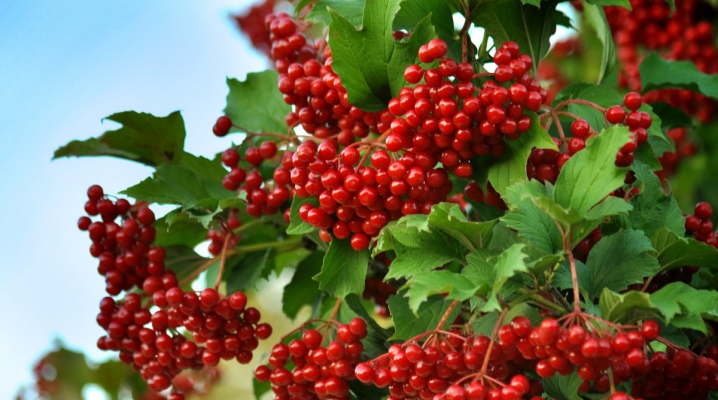
Viburnum is a flowering ornamental shrub that can become a bright decoration for any garden. A variety of varieties and types of representatives of this genus allows landscape designers to bring to life the most unexpected creative ideas, create bright and original plant compositions. What types and varieties of viburnum can be found in modern gardens? What are their main features?
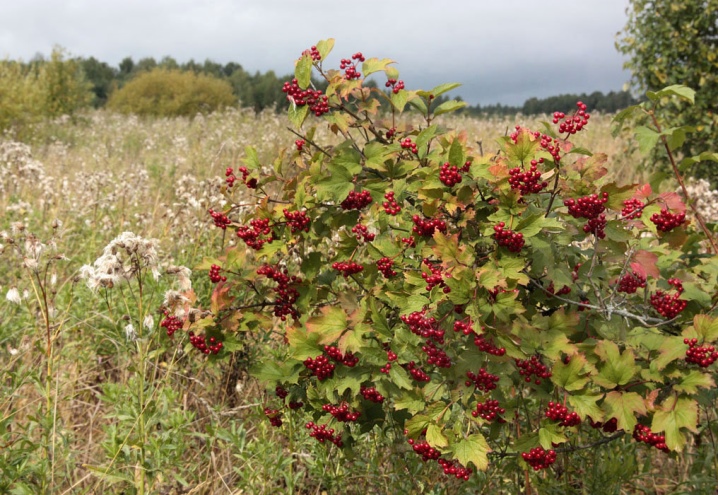
Description
The viburnum genus is represented by evergreen and deciduous perennials of the Adoksovye family, which are found mainly in temperate zones. Most representatives of this genus are characterized by increased winter hardiness, shade tolerance, the ability to quickly adapt to changing environmental conditions.
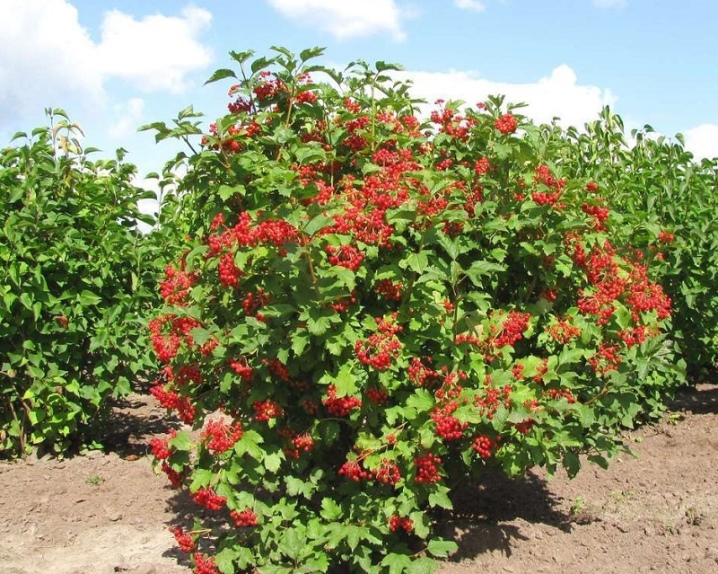
The genus described includes more than 160 species of low and medium-sized shrubs and small trees, differing in both external characteristics and requirements for growing conditions.
Plant height can range from 1.5 to 6 meters.

Most plants of this genus have well-branched, upright silvery-brown or pale red stems covered with whole or carved leaves. The size and shape of the leaf plates depend on the species characteristics of the plants.
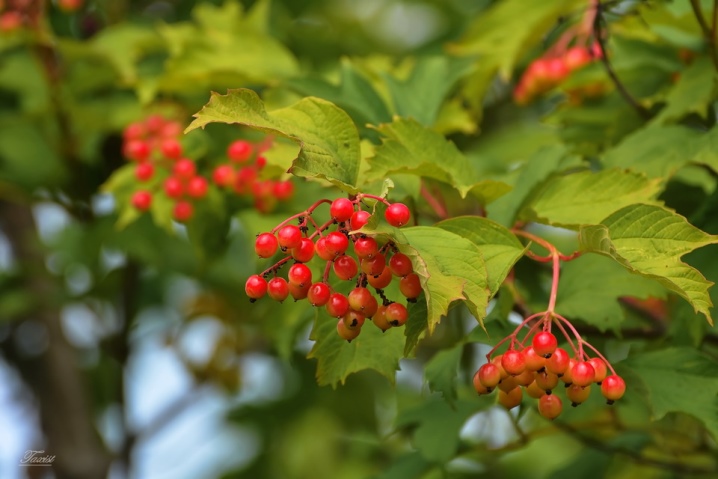
The beginning of flowering for most representatives of the Kalina genus falls on the end of May or the first half of June. At this stage, the plants form many simple or complex inflorescences in the form of bulky panicles, umbrellas or scutes. The sizes of inflorescences in diameter can reach 5-10 centimeters or more. Most often, the inflorescences are snow-white, pale pink, snow-white cream or light yellow in color.
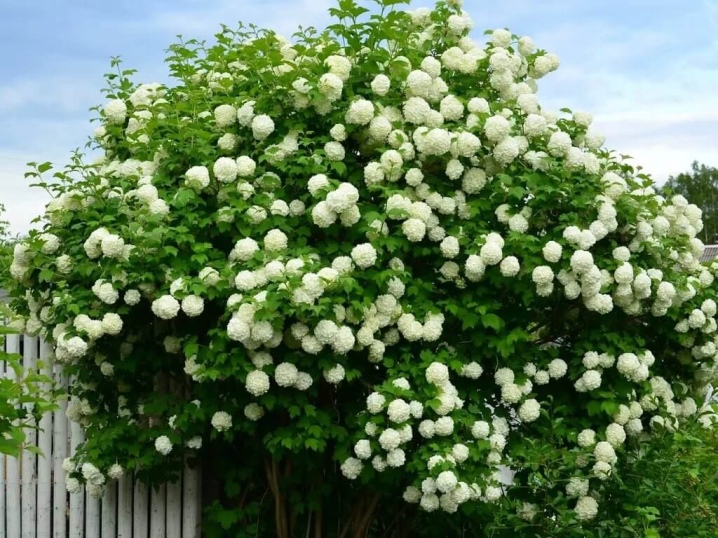
Fruit ripening in most plant species of this genus occurs at the end of August or the first half of September.
Viburnum fruits are medium-sized spherical or ovoid fleshy drupes, combined into conical or corymbose bunches. The color of the fruit can be bright ruby, deep burgundy, bluish black or golden yellow.
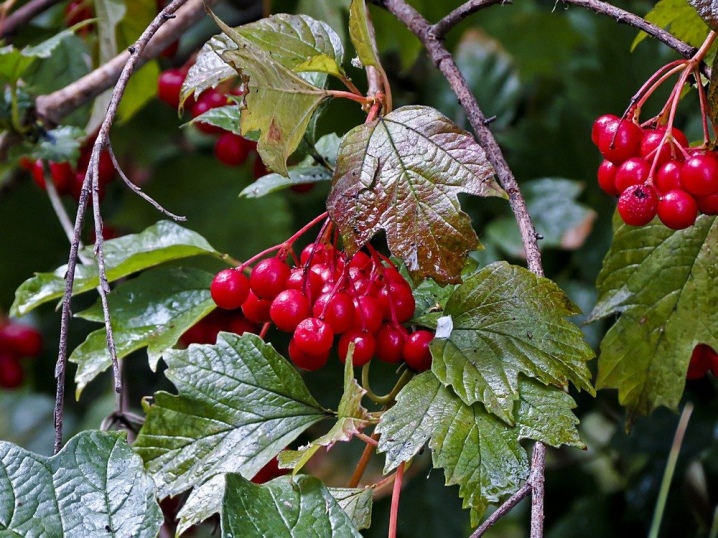
Representatives of the viburnum genus have a well-developed and powerful root system. The depth of the roots usually does not exceed 50 centimeters.

Views
The specified genus includes more than 160 species found in the wild. Many species are widely used in ornamental gardening.
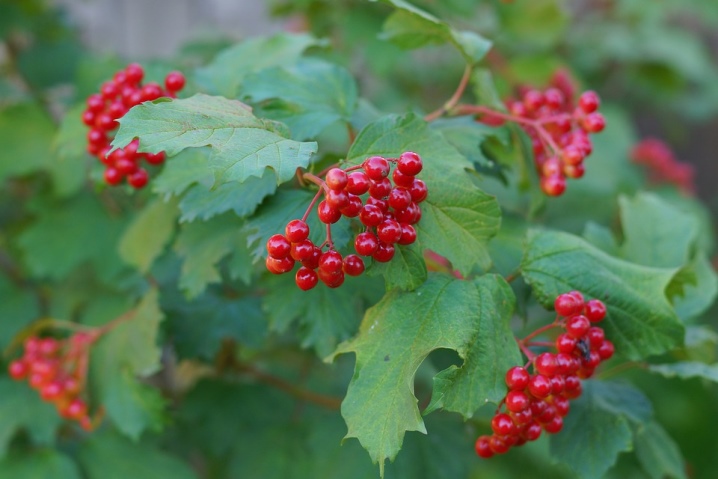
Black viburnum (other names - gord, gordovina) is a typical plant species of this genus, found mainly in European forests. The plant can reach a height of 5-6 meters. This forest viburnum has powerful, well-branched stems, a dense and voluminous crown. Leaves are dark green, pubescent or rough, egg-shaped. Inflorescences are umbrella-shaped, dense, dense, creamy white, reaching 10 centimeters in diameter.
At first, the fruits have a rich scarlet color, which, after ripening, is replaced by a coal-black color.
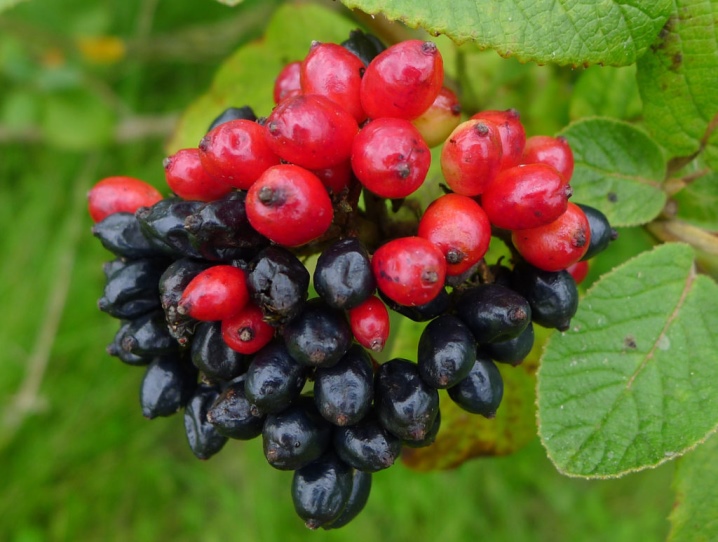
Sargent is a highly decorative species of viburnum, notable for the unusual shape of the leaves and the original color of the flowers. The plant is a strong bush with many central and lateral shoots. Leaves are notched, lobed or wedge-shaped, bright green in color. Inflorescences are umbrella-shaped, pistachio-green, white-pink, green-yellow or snow-white. The fruits are round, bright red or golden yellow.
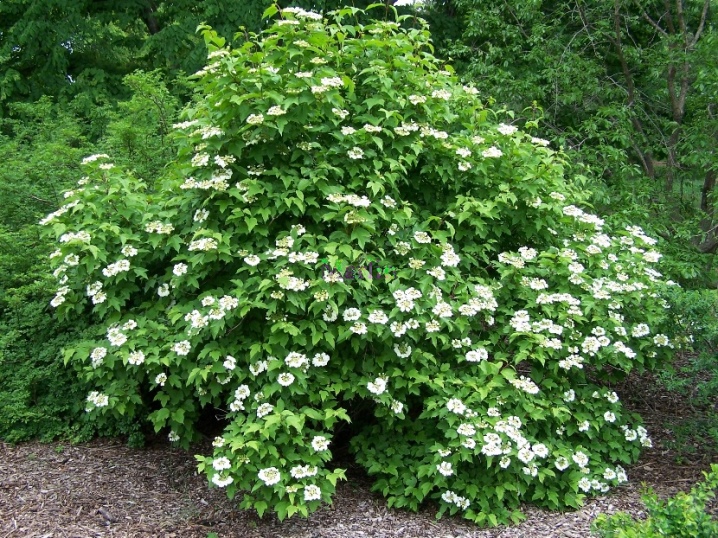
Wrinkled viburnum is an evergreen shrub found mainly in Asian countries. Plant height can reach 2-3 meters. Stems are erect, pubescent, covered with dark green ovoid or lanceolate leaves. The flowers are small, creamy yellow or white-gray, united in shields measuring 15-20 centimeters. Unripe fruits are dark ruby, ripe ones are glossy black.
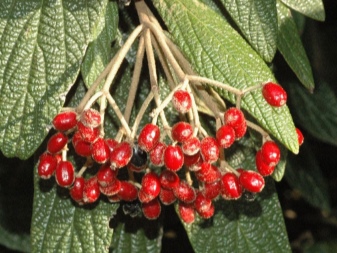
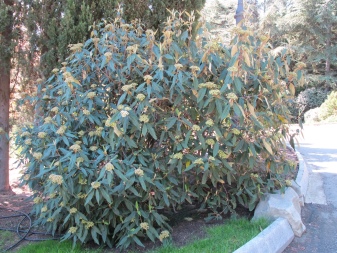
Kalina David is a type of evergreen slow-growing shrubs, the homeland of which is considered to be China. The height of adult plants is about 1 meter, the size of the crown in diameter is about 1.4 meters. The stems are covered with elongated and pointed leaves of a dark emerald color. In early summer, the plants form many lush, creamy pink, umbrella-shaped inflorescences. Fruit ripening occurs in the second half of autumn. Fruits are ovoid fleshy drupes of deep blue color.
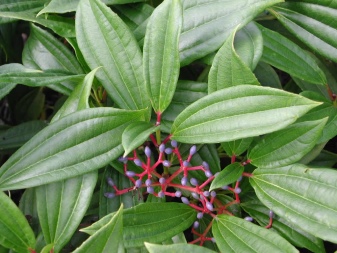
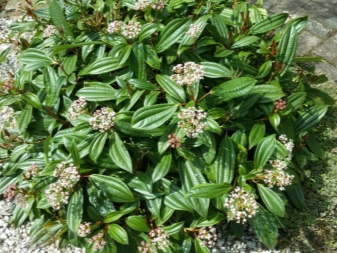
Viburnum viburnum is a type of vigorous deciduous shrubs or trees, reaching a height of 2-5 meters. Plants have a dense and spreading crown, numerous reddish shoots and erect red-brown stems. Leaves are elliptical, pointed, serrated at the edges. Inflorescences are lush, snow-white or white-cream, umbrella-shaped. Fruits are small, ovoid or globular, black, edible.
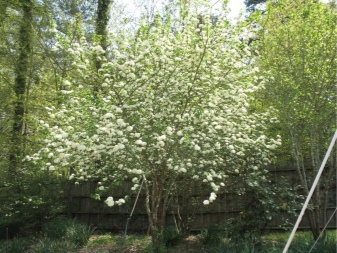

Other types
Portuguese viburnum is a highly decorative species of vigorous shrubs and trees of the Adox family. The habitat of these powerful perennials is considered to be the Mediterranean countries. Plants can be up to 5 meters high. Stems are strong, well-branched, covered with burgundy-brown bark. Leaves are emerald green, ovate or lanceolate, with a pointed tip. Inflorescences are lush coral pink umbrellas 8-10 centimeters in size. Fruits are juicy, bluish-black in color.
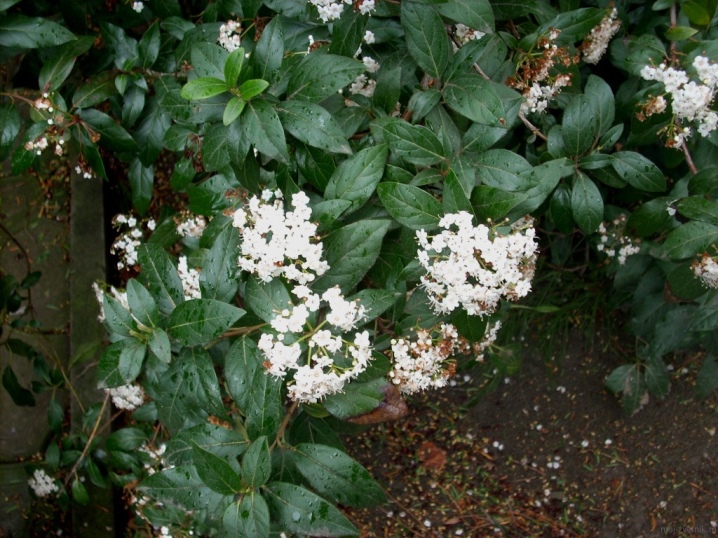
Viburnum Wright is a rare species of shrubs and trees of the Adoksovye family that grows in the Far East. Plant height reaches 2.5-3 meters. Stems are brown-gray, thin, covered with rounded-diamond-shaped embossed leaves. Inflorescences - voluminous and dense panicles of white-golden color. Flowering begins in the first half of summer. Fruits are round, fleshy, crimson-scarlet.

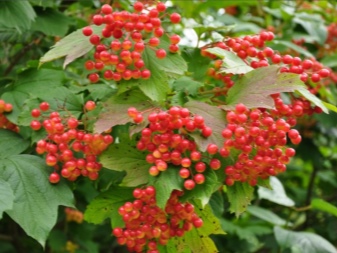
Varietal variety
To date, breeders have bred many varietal forms of viburnum with various morphological traits and biological characteristics. In ornamental horticulture, dwarf, medium-sized and tall varieties of plants of this genus with leaves and fruits of all kinds of colors and sizes have become widespread.
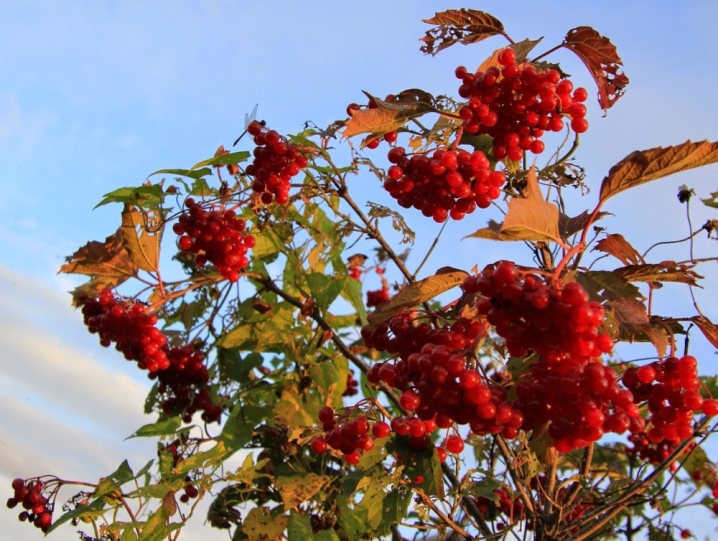
Popular varieties
Farrera Is a popular decorative variety of viburnum with fragrant flowers. The plant can reach a height of 2.5-3 meters. The size of the crown in diameter can be about 2-2.5 meters. Plants enter the flowering phase in spring. Inflorescences are numerous, porcelain white or pale pink panicles. Fruits are black, round, glossy.
The variety is widespread in ornamental gardening.
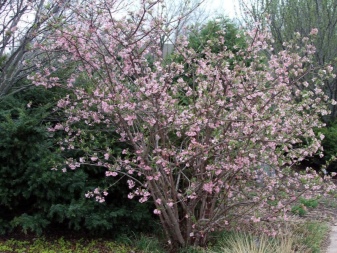
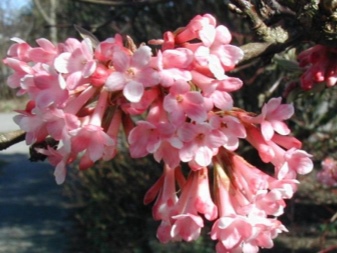
"Onondaga" Is a very attractive and abundantly flowering variety of Sargent viburnum. Plants form neat branching bushes about 2.5 meters high. Shoots are dense, straight, reddish-brown in color. Flowering begins in the third decade of May and lasts until mid-June. Inflorescences are large, fragrant shields of purple-white or pink-red colors. Fruits are round, golden-orange or orange-red, ripening in September-October.
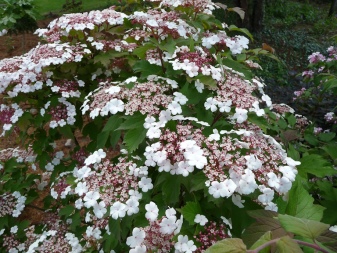
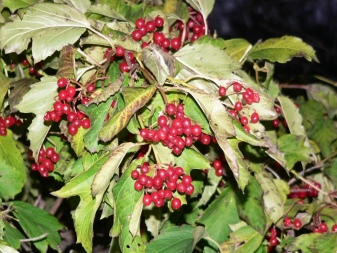
"Souzga" - a winter-hardy and moisture-loving variety, usually grown by gardeners as an ornamental crop. The plant forms compact but vigorous shrubs with a height of 3-3.5 meters. Shoots - dense, strong, covered with silvery-brown bark. Leaves are juicy green, five-lobed. The fruits are large, spherical, ruby red.Fruit ripening occurs in September.
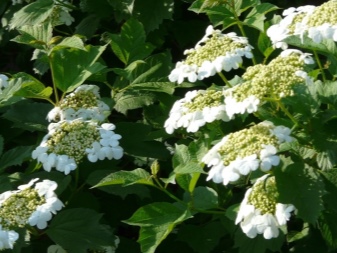
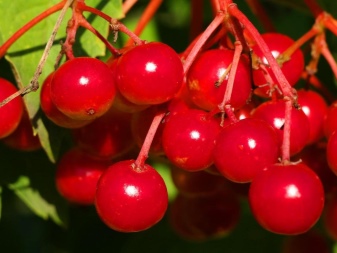
"Maria" Is a relatively old but popular variety of viburnum with impressive yields. Viburnum of this variety forms sprawling, vigorous bushes, reaching 2-2.5 meters in height. Shoots - powerful, thick, covered with bright emerald wrinkled leaves. Fruits are large, round, juicy, ruby-scarlet, collected in corymbose bunches.
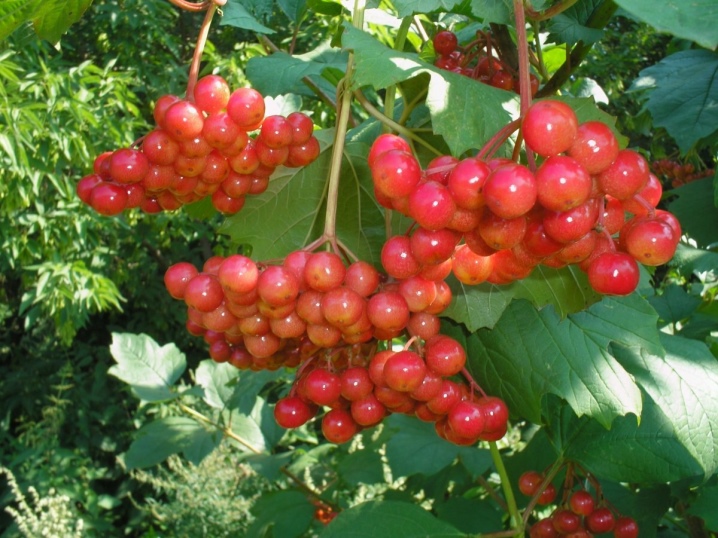
"Zarnitsa" - unpretentious fruitful variety, resistant to the influence of negative environmental factors. Plant height can reach 2.5-4 meters. Shoots - elastic, pale greenish shade, covered with large lobed leaves with a heart-shaped base. Fruits are globular, bitter, crimson-red.

"Zholobovsky" - a hardy frost-resistant variety of viburnum, which is popular with gardeners. The plant is a vigorous shrub about 3 meters high. The leaves are large, bright emerald, lobed. Fruits are elongated, ovate, burgundy, fleshy, collected in umbrella-shaped bunches. The taste of the fruit is sweetish with a slight bitterness. The ripening time of the fruits is mid-early.

Yellow (yellow-fruited)
"Xanthocarpum" Is a very unusual variety, relatively rare in modern gardens. Plant height usually does not exceed 1.5 meters. Bushes - squat, compact, easy to form. Shoots - thin, branching, covered with brownish-cherry or brownish-silvery bark. Inflorescences are lush, milky white, umbrella-shaped. Fruits are round, golden yellow, slightly translucent.
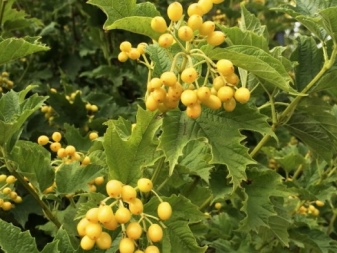
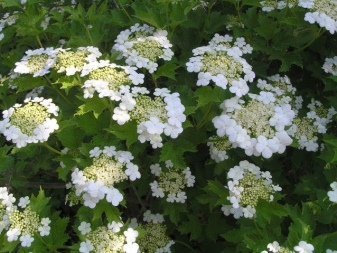
Self-fertile
"Red bunch" - an old self-fertile variety, grown by gardeners most often for the sake of juicy and large fruits. Plants form medium-sized, not too spreading bushes up to 3 meters high. Shoots are erect, strong, pale gray in color. Fruits are juicy, ruby-scarlet, sour-sweet, united in dense clusters or bunches.
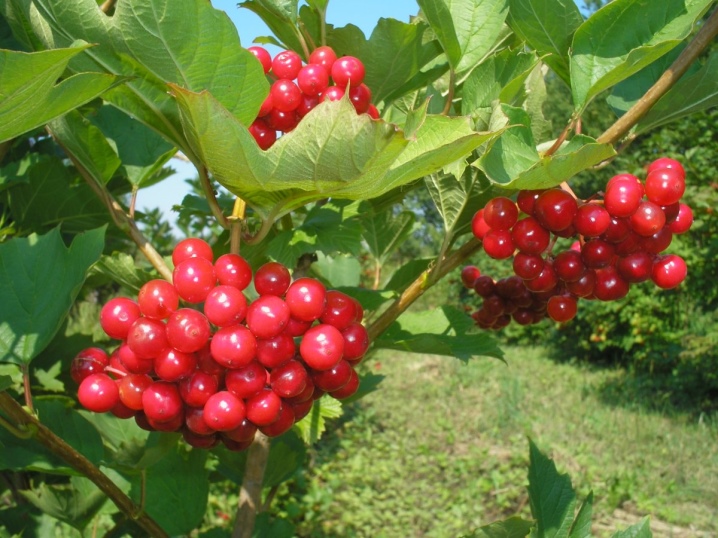
Fruit
"Belorusskaya" - a frost-resistant variety of large-fruited viburnum. The height of the plants is about 3-4 meters. Bushes - powerful, spreading, multi-stemmed. Fruits are large, ruby-red, juicy, pleasant to the taste.
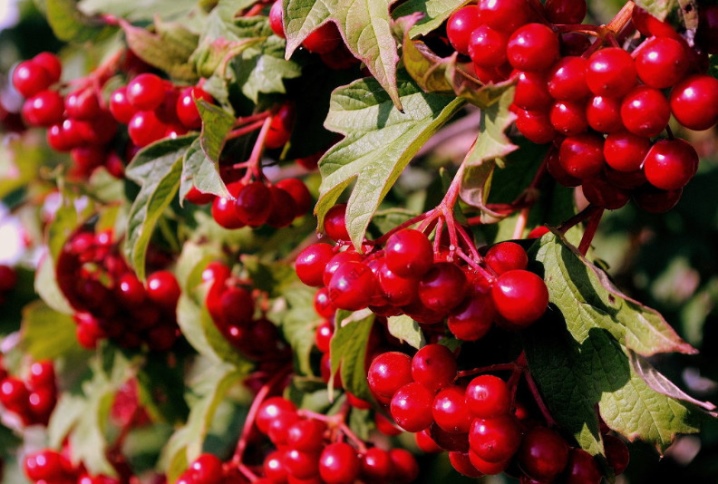
"Vigorovskaya" - a domestic variety of viburnum, recommended for growing in regions with difficult climatic conditions. Plant height reaches 3 meters. The variety belongs to sweet-fruited (sugar content in fruits is about 14-15%). Fruits are large, rich burgundy, with a pleasant sweetish-tart taste.

"Ulgen" - an unpretentious variety of viburnum, relatively resistant to damage by pests and pathogens. Plant height is 3-4 meters. Bushes - strong, spreading, well branched. The leaves are large, dark emerald, embossed, five-lobed. Fruits are bright ruby, glossy, very juicy. The taste of the fruit is sweetish with subtle hints of bitterness.
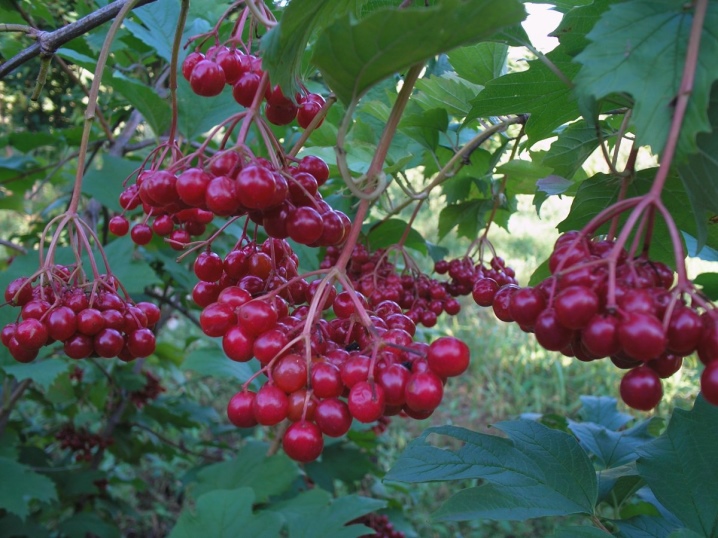
"Taiga rubies" - a relatively old variety, often found in domestic gardens. The plant is remarkable for its impressive productivity, frost resistance, drought resistance, high resistance to diseases and pests. The height of the trees reaches 3 meters. Stems are powerful, branched, covered with reddish-gray bark. Inflorescences are pale pink lush panicles 6-7 centimeters long. Fruits - ruby-scarlet, with juicy yellow pulp, which has a tart-sweet taste.
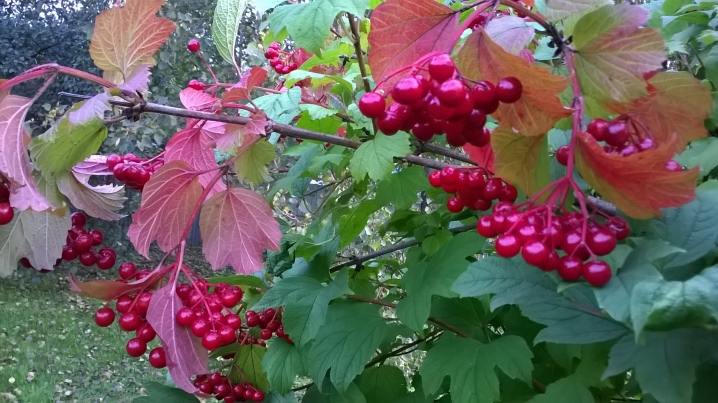
How to choose?
When planning to grow viburnum in your summer cottage, you should familiarize yourself in advance with the description and characteristics of the most interesting varieties and species. So, conditionally, all varietal and species diversity of representatives of the viburnum genus can be divided into 2 main groups:
- decorative;
- fruiting.
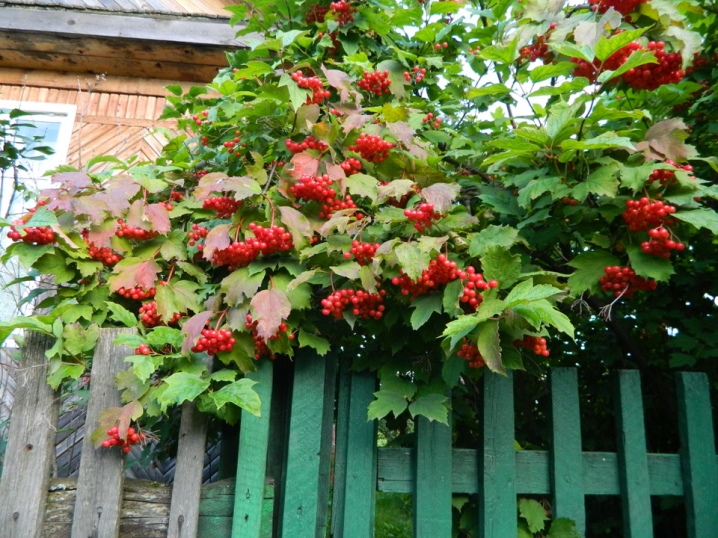
Ornamental varieties and varieties of viburnum are most often used by gardeners for decorating personal plots (for creating hedges, group and single plantings).
Fruiting plants, on the other hand, are usually cultivated to produce healthy and tasty fruits.
Among the most popular decorative varieties of viburnum are "Buldenezh", "Roseum", "Xanthokarpum", "Eskimo"... Such spectacular varieties as Pink Beauty, Aureum, Charles Lamon.
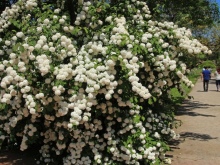

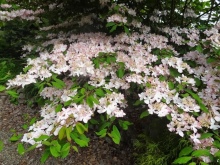
Among the fruiting varieties of viburnum, the berries of which are characterized by excellent taste, gardeners note such as "Vigorovskaya", "Ulgen", "Red cluster", "Taiga rubies".
The fruits of these varieties have a rather pleasant taste and can be used to make compotes, fruit drinks, and jams.
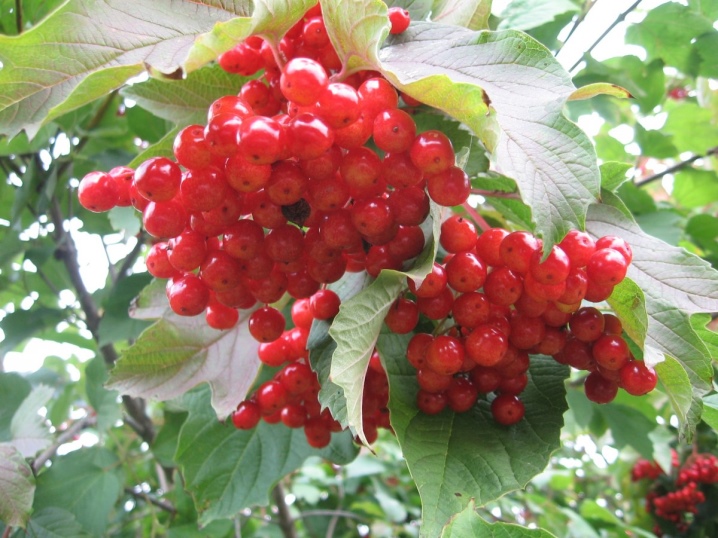
When choosing a suitable variety of viburnum, you should consider such important parameters as:
- frost resistance;
- winter hardiness;
- endurance.
The adaptability of the plant to unfavorable changes in environmental factors (sudden changes in the weather, sharp temperature and atmospheric changes) largely depends on these characteristics.
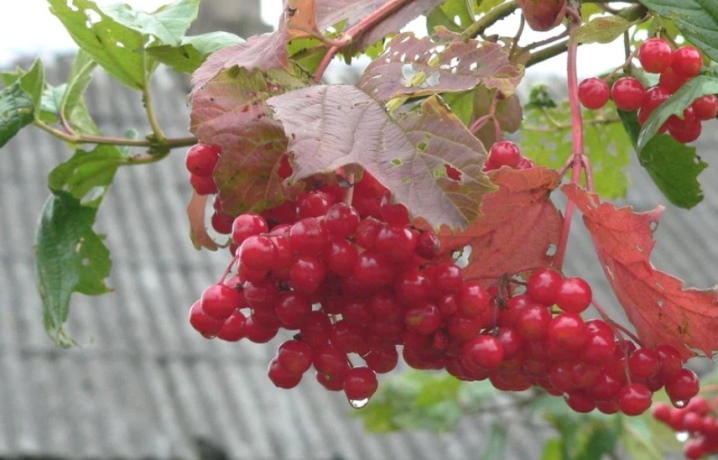
In particular, for regions with difficult climatic conditions (for the Moscow region, the Urals, Siberia), viburnum varieties are recommended "Souzga", "Zarnitsa", "Vigorovskaya", "Shukshinskaya", "Sunset", "Uralskaya sweet", "Elixir"... They are relatively old and proven by more than one generation of gardeners.
Their main characteristics are usually referred to as resistance to temperature extremes, frosts, and unfavorable weather conditions.
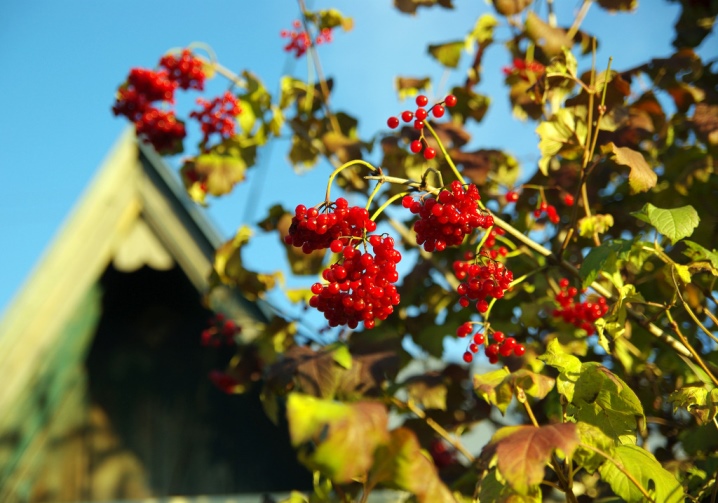
Other important parameters that should be considered when choosing a viburnum of a particular variety are the height of adult plants and the diameter of their crown.
It is known that some representatives of this genus are capable of reaching a height of 5-6 meters, and the span of their crown can be 3-4 meters. It is natural that the cultivation of such bushes and trees on the site will be fraught with many difficulties. For this reason, for a small garden, it is better to select low and medium-sized varieties, the height of which will not exceed 2-2.5 meters. Such well-known varieties of viburnum, such as Eskimo, Compactum, Red Coral and Nanum.
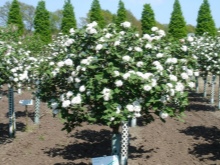
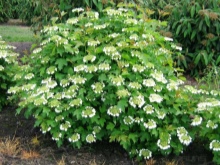
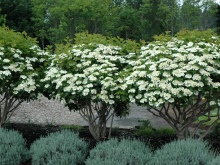
In the next video, you will learn about the beneficial properties of viburnum and how to use it.



































































The comment was sent successfully.